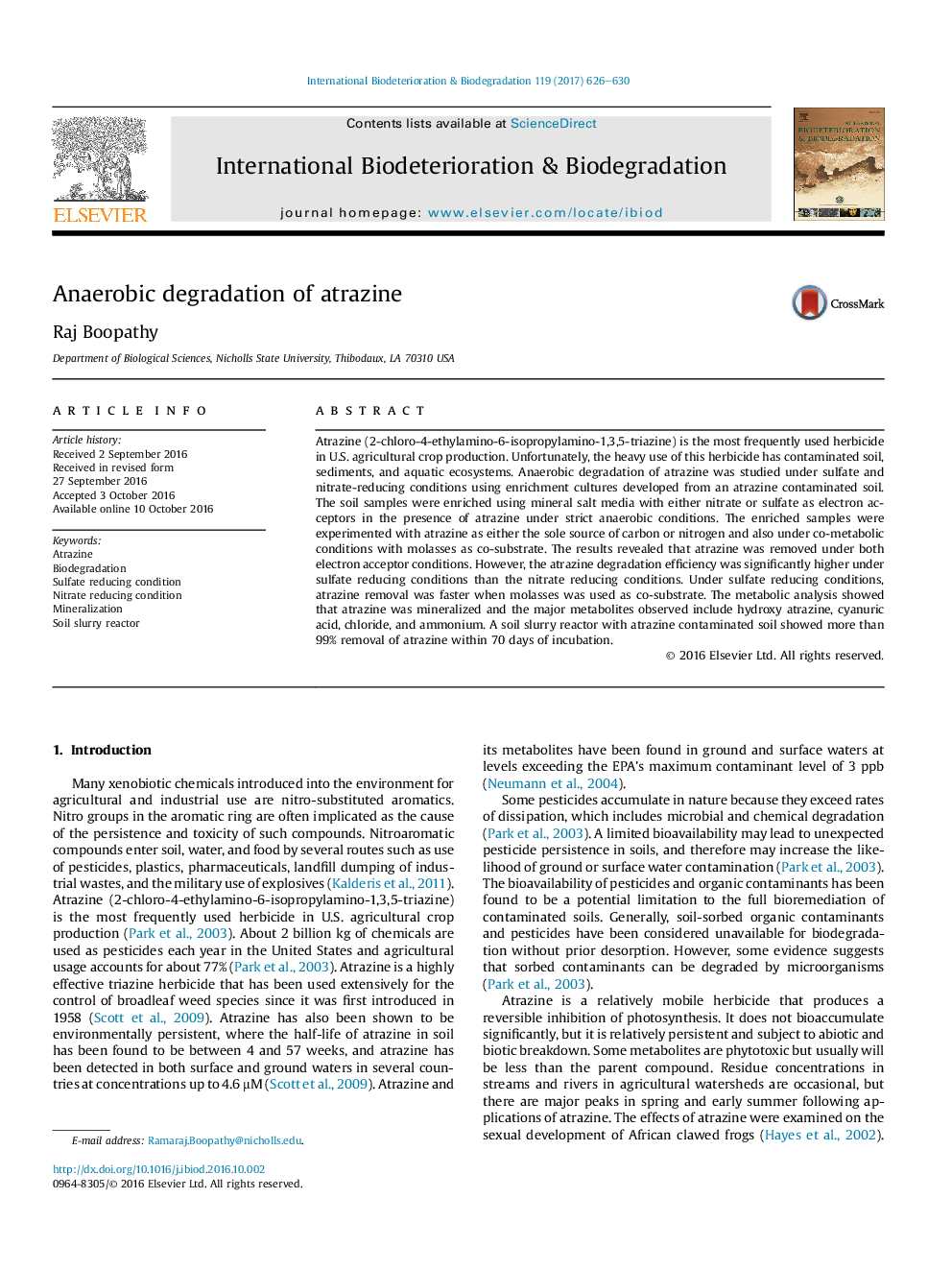| کد مقاله | کد نشریه | سال انتشار | مقاله انگلیسی | نسخه تمام متن |
|---|---|---|---|---|
| 5740490 | 1616298 | 2017 | 5 صفحه PDF | دانلود رایگان |
- Anaerobic degradation of atrazine was studied.
- Atrazine was degraded under sulfate reducing conditions.
- A lab scale soil slurry reactor was demonstrated for the removal of atrazine from the contaminated soil.
Atrazine (2-chloro-4-ethylamino-6-isopropylamino-1,3,5-triazine) is the most frequently used herbicide in U.S. agricultural crop production. Unfortunately, the heavy use of this herbicide has contaminated soil, sediments, and aquatic ecosystems. Anaerobic degradation of atrazine was studied under sulfate and nitrate-reducing conditions using enrichment cultures developed from an atrazine contaminated soil. The soil samples were enriched using mineral salt media with either nitrate or sulfate as electron acceptors in the presence of atrazine under strict anaerobic conditions. The enriched samples were experimented with atrazine as either the sole source of carbon or nitrogen and also under co-metabolic conditions with molasses as co-substrate. The results revealed that atrazine was removed under both electron acceptor conditions. However, the atrazine degradation efficiency was significantly higher under sulfate reducing conditions than the nitrate reducing conditions. Under sulfate reducing conditions, atrazine removal was faster when molasses was used as co-substrate. The metabolic analysis showed that atrazine was mineralized and the major metabolites observed include hydroxy atrazine, cyanuric acid, chloride, and ammonium. A soil slurry reactor with atrazine contaminated soil showed more than 99% removal of atrazine within 70 days of incubation.
Journal: International Biodeterioration & Biodegradation - Volume 119, April 2017, Pages 626-630
